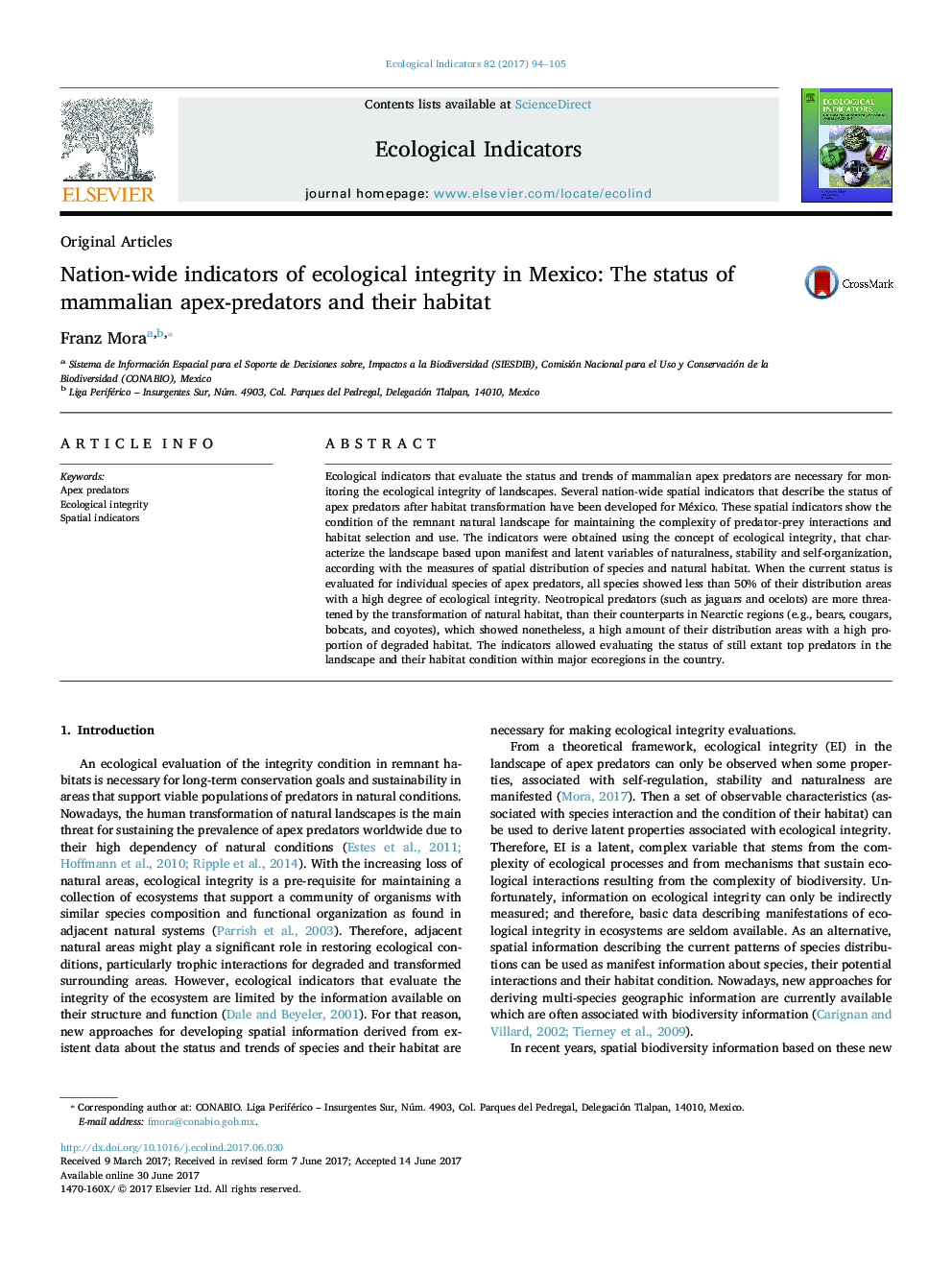| کد مقاله | کد نشریه | سال انتشار | مقاله انگلیسی | نسخه تمام متن |
|---|---|---|---|---|
| 5741312 | 1617120 | 2017 | 12 صفحه PDF | دانلود رایگان |
- Ecological indicators that evaluate the status and trends of mammalian apex predators are necessary for monitoring the ecological integrity of landscapes.
- As observed characteristics and indicators of ecological integrity, the spatial indicators developed here serve as a way to summarize and describe the status of predator and prey species and their habitat.
- As manifest indicators, spatial information serves to diagnose current habitat conditions, and to monitor significant changes that jeopardize the sustainability of viable populations.
- As latent indicators, spatial information of ecological integrity showed a higher habitat transformation for Neotropical predators than Nearctic predators.
- The combined effects of habitat degradation and transformation have greater effects in ecological integrity in Nearctic predators than for Neotropical predators.
- The pattern observed for the differences between Nearctic and Neotropical predators is due to historical process of land cover transformation.
Ecological indicators that evaluate the status and trends of mammalian apex predators are necessary for monitoring the ecological integrity of landscapes. Several nation-wide spatial indicators that describe the status of apex predators after habitat transformation have been developed for México. These spatial indicators show the condition of the remnant natural landscape for maintaining the complexity of predator-prey interactions and habitat selection and use. The indicators were obtained using the concept of ecological integrity, that characterize the landscape based upon manifest and latent variables of naturalness, stability and self-organization, according with the measures of spatial distribution of species and natural habitat. When the current status is evaluated for individual species of apex predators, all species showed less than 50% of their distribution areas with a high degree of ecological integrity. Neotropical predators (such as jaguars and ocelots) are more threatened by the transformation of natural habitat, than their counterparts in Nearctic regions (e.g., bears, cougars, bobcats, and coyotes), which showed nonetheless, a high amount of their distribution areas with a high proportion of degraded habitat. The indicators allowed evaluating the status of still extant top predators in the landscape and their habitat condition within major ecoregions in the country.
199
Journal: Ecological Indicators - Volume 82, November 2017, Pages 94-105
